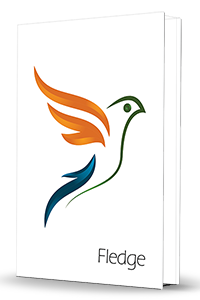ac·cel·er·ator, A means to move faster.
There are thousands of business accelerators around the world, all with an intent to help entrepreneurs. Despite this vast array of competition, Fledge is unique in multiple, important ways.
To understand those differences, it is first important to understand the most common other patterns of programs. In this overview, do note that both terms, “incubator” and “accelerator” are commonly used, with no agreed-upon meaning.
Co-working “Incubators”
The most common “incubator” takes the form of a co-working space, selling desk space and cubicles to anyone who needs a place to work. Many of these incubators include additional services, such a access to accountants, lawyers, and other service providers. Many include educational events, an occasional visit by mentors, and other community events.
These spaces are far better for entrepreneurs than working from home or coffee shops, but by themselves insufficient. What works well is for programs like Fledge is be located within a co-working space, to provide a path for entrepreneurs for an intense burst of help, and at the same time, for the co-working space to provide a community of support for the “fledgling” companies.
Examples of co-working spaces include: The Impact Hub (80+ cities and growing), WeWork (New York and a dozen other cities), 1871 (Chicago), 1776 (Washington DC), Galvanize (Denver and Seattle).
Invitation-only “Incubators”
The next-most common “incubator” is similar to the co-working spaces in format, but is not open to all comers. Instead, the management invites specific teams to co-located within the workspace, often providing either free space and/or a cash investment.
Many of these incubators limit the duration the companies can remain in-house, but these timelines are typically 6, 12, 18, or 24 months.
At least one of these incubators, IdeaLab, has been wildly successful, spawning billions of dollars of tech companies, including Overture, Shopping.com, Citysearch.com, eToys.com, and more. Others, such as the McKinstry Innovation Center, exists more to have entrepreneurial energy infused within a mid-sized organization.
Intense, 3-Month “Accelerators”
In 2005, Y Combinator created a new style of incubator. Twice per year, applications were open to the public. From hundreds of applicants,
Y Combinator picked a dozen (or more recently, a few dozen). Each invitee receives $15,000-$20,000 in cash, and an intense 3-month period of business planning assistance. Participants are required to move to the Bay Area for the three months, but meet together as a “cohort” only once per week. During the week, companies work wherever they choose and are supported by Y Combinator via “Office Hours” with Paul Graham, the Founder, and other mentors.
In 2006, TechStars created a variation of Y Combinator, inviting companies not only to Boulder, Colorado for three months, but inviting all the companies into a single co-working space for daily interaction between the teams, but also with dozens of outside mentors.
Since founding, Y Combinator has expanded by increasing the number of invitees per cohort, over 150 in 2015. TechStars consistently invites 10 or 11 companies per cohort, but has expanded to Boston, New York, Seattle, Austin, Chicago, and London, plus has expanded into partnerships with Fortune 500 companies, running the Disney and Nike Accelerators. 22 programs in total as of 2016.
Most of the thousands of “tech” incubators follow the format of either
Y Combinator or TechStars, as does Fledge.
Business Plan Competitions
Another common format for assisting entrepreneurs comes in the form business plan competitions. These are most commonly run by business schools, corporations, and foundations.
The basic form of these programs is for teams to submit a written business plan. A selected subset of applicants is then invited to “pitch” a small group of judges, sometimes in multiple rounds. One team is rewarded as the “winner”, usually with a cash grant or investment.
In regards to assistance, these competitions typically assign one or two “coaches”, to help prepare the written plan and/or the presented pitch. The best competitions provide further support to the winner, or the full set of semi-finalists.
Next Chapter »»









